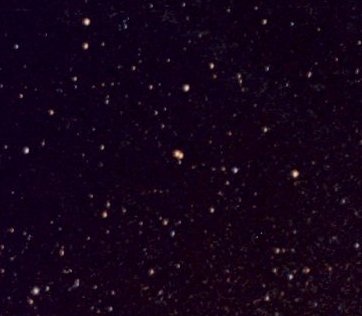
 |
Nu Coronae Borealis is a remarkable naked-eye, line-of-sight, "double" in which the cool reddish stars have no physical relation with each other, even though they are at nearly the same distances, have similar apparent magnitudes, have the same masses, and are near the same points in the ageing process. The brighter and western star, Nu-1, is just five minutes of arc away from Nu-2. Sigma CrB is just above Nu, while Tau CrB is the brighter of the two stars toward the upper left. Xi CrB is at far right center. |